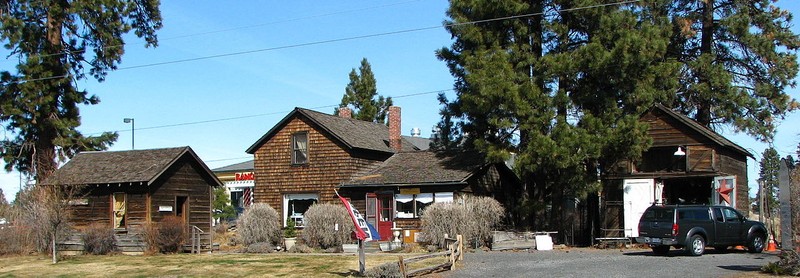Charles Boyd Homestead
Introduction
Text-to-speech Audio
Images
These three buildings are all that remain from the Charles Boyd Homestead. Built between 1904 and 1909, they are the only ranch buildings remaining from the early 1900s.

Backstory and Context
Text-to-speech Audio
Charles Boyd was born in Ontario, Canada in 1863. He arrived in Michigan in the 1870s and then made his way to Philipsburg, Montana in 1883, where he started a meat-supply business with his brother, William. Ten years later he married his wife Anna, with whom he had five children. Boyd became a respected citizen and served two terms as mayor. Seeking new business opportunities, he left Philipsburg in 1904 and settled at a location along the Deschutes River close to rapids.
Over time, he developed the ranch. He built a partial dam and powerhouse, the corrals, feedlots, slaughterhouse, ice house (he cut large blocks of ice from Swalley Pond or ice caves in the area), barn, and hay shed. As noted above, Boyd supplied meat throughout the area. He earned a good reputation by maintaining the temperature of the meat, which he accomplished by transporting it at night. In this way, Boyd provided a critical service, especially to the logging camps which were very important to the economy and a large source of his income.
Boyd's success ended when the Great Depression began. The demand for lumber decreased significantly, which meant that the area logging camps near Bend stopped contracting with him. Competition from chain stores contributed to the decline of the business as well. Boyd passed away in 1933. The ranch stayed in the family until 1978. Where the three buildings are now was part of the original ranch and close to where the Swalley Pond was located (it was eventually filled in).
Sources
Boyd, Charles William. "Boyd, Charles, Ranch House, Bunk House and Ice House." National Park Service - National Register of Historic Places Nomination Form.
Burns, Bonnie. "A Sense of Place: The Boyd Homestead." The Homesteader. November 2015. https://www.deschuteshistory.org/wp-content/uploads/2015/11/2015-November-Homesteader.pdf.
Ian Poellet, via Wikimedia Commons: https://commons.wikimedia.org/wiki/File:Boyd_Homestead_Group_-_Bend_Oregon.jpg
